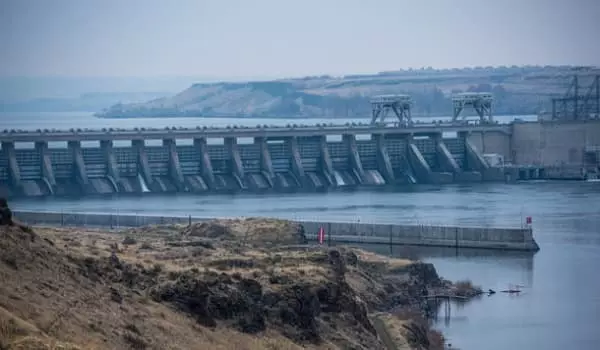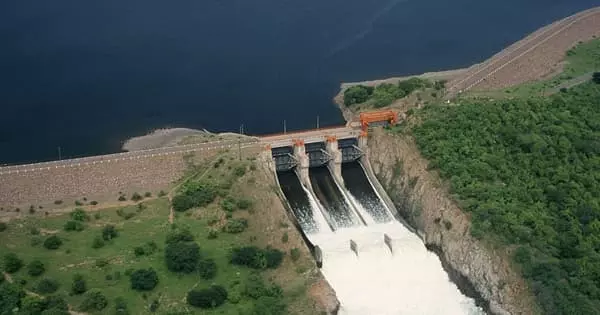Dams alter how rivers function. They have the ability to trap sediment, burying rock riverbeds where fish spawn. Dams that divert water for power and other purposes also take away water that is needed for healthy in-stream ecosystems. Peak power operations can cause significant changes in reservoir water levels. Hydro schemes can have a negative impact on the environment, so caution must be exercised during the planning and installation stages.
According to McGill University researchers, planned hydroelectric developments could cut over 260,000 kilometers of river. The Amazon, the Congo, and the Irrawaddy are just a few of the rivers that could lose their free-flowing status if new hydropower dams are built. The study, led by the World Wildlife Fund and recently published in Global Sustainability, found that planned dams and reservoirs are major contributors to the global decline of free-flowing rivers. It also provides a comprehensive list of science-based solutions to minimize the impacts of hydropower development in rivers.
“We used a dataset of over 3700 potential hydropower projects and calculated their impacts on rivers around the world,” says Prof. Bernhard Lehner of McGill University’s Global HydroLab, who created the underlying global river maps. “It was disheartening to learn that many of today’s last free-flowing rivers are in danger of being permanently altered by new energy infrastructure.”
We used a dataset of over 3700 potential hydropower projects and calculated their impacts on rivers around the world, It was disheartening to learn that many of today’s last free-flowing rivers are in danger of being permanently altered by new energy infrastructure.
Prof. Bernhard Lehner
Furthermore, the study finds that all proposed dams on free-flowing rivers would generate less than 2% of the renewable energy needed by 2050 to keep global temperature rise below 1.5 degrees Celsius – a small contribution with potentially disastrous consequences for the remaining free-flowing rivers, as well as the people and wildlife that rely on them.
According to the researchers, as world leaders gather this fall for a critical round of UN climate and biodiversity summits, policymakers must consider the tradeoffs between hydropower development and maintaining healthy freshwater ecosystems.

Looking at the tradeoffs — Hydropower development vs. environmental costs
“It is true that hydropower is a renewable energy source with relatively low carbon emissions,” says Günther Grill, a postdoctoral fellow at McGill who crunched the numbers and created the spatial environmental assessment model to estimate the impact of future dams. “However, hydropower projects can have long-term and irreversible effects on river and floodplain dynamics and functions, especially in tropical wilderness areas with high biodiversity.”
The policy paper emphasizes that connected and healthy rivers provide a variety of benefits that are often overlooked, such as freshwater fish stocks that improve food security for hundreds of millions of people; sediment delivery that nourishes agriculture and keeps deltas above rising seas; and floodplains that help mitigate flood impacts and support a diverse range of biodiversity.
“We can no longer afford to think of river health, climate change, and biodiversity loss as separate issues,” says Michele Thieme, a lead freshwater scientist at World Wildlife Fund (WWF) and lead author of the study. “Rivers are powerful agents for keeping wildlife and communities healthy, especially in a warming climate, but their ability to support life is under threat in many parts of the world due to hydropower dams. The best policy solutions will be those that balance the need for renewable energy with the numerous benefits of healthy freshwater ecosystems.”
Safeguarding free-flowing rivers while meeting climate targets and energy needs
The researchers compiled a list of science-based policy solutions for meeting climate targets and energy goals while also protecting free-flowing rivers and their benefits to people and nature in their paper. These solutions include avoiding river fragmentation by exploring alternative development options such as non-hydro power renewable energy sources such as solar and wind; minimizing impacts by siting dams in locations with fewer consequences for people and nature; restoring rivers through dam removal; and offsetting the negative impacts of dams on one river by formally protecting another, similar river.
“There has been a long history of conflicts, studies, and debate over how to both protect and develop rivers in a sustainable manner,” Lehner adds. “With the global pandemic causing a pause in new developments, the Paris Agreement’s anticipated further implementation, and high-level global climate and biodiversity meetings in 2021, now is an opportune moment to consider the current trajectory of development and policy options for reconciling dams with freshwater system health.”





